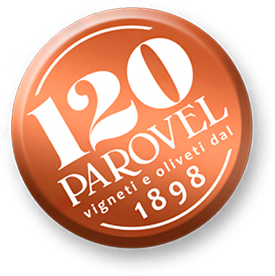For our particular climatic conditions, Parovel's extra virgin olive oil, with the Tergeste DOP certification, every year expresses very high nutraceutical values, given by the natural chemical composition of the Bianchera extra virgin olive oil, our queen olive vriety, which has learned to live with the bora and with cold temperatures. The exposure, the mineral soil rich in groundwater, the cool breezes, they all contribute to making Parovel's and extra virgin olive oil of great quality, but what are the parameters that determine it?
A method to analyze the good quality of the extra-virgin olive oil is the sensory analysis: a group of tasters analyzes the oil starting from an olfactory tasting, to get to the tasting, the visual examination and the evaluation of positive and negative attributes. To this type of analysis is added the chemical analysis necessary to define the actual quality of the product based on objective evaluation parameters: K232, K270 and delta K. Let's find out their meaning.
What is K232?
Let's start from K232. This parameter measures the absorption of ultraviolet light at a wavelength of 232 nanometers and indicates if the oil structure has changed as a result of oxidation. This parameter can increase if the olives are excessively ripe, damaged or attacked by the fly, if the grinding takes place under suboptimal conditions and if there is a fraudulent addition of rectified oil, conditions that can be detected by sensory analysis through the presence of defects such as worm or cooked. According to current legislation the maximum value for extra virgin olive oil is 2.5.
What is the K270?
This analysis does not present profound differences with respect to K232, but is nevertheless part of the various spectrophotometry tests to analyze the reaction of the oil at a given wavelength. K270 measures the absorption of ultraviolet light at a wavelength of 270 nanometers. In this case, the secondary oxidation state of each model is verified, that is the possible transformations of the oil structure following the formation of the double bonds. Very often it can happen that even triple or quadruple bonds are generated, able to compromise the taste and the quality of the oil itself and not to make it extra virgin. The value can grow even after prolonged storage. According to current legislation, the maximum value for extra virgin olive oil is 0.22.
What is Delta K?
Delta K controls the secondary oxidation state of extra virgin olive oil. In this case, the possible absorption of ultraviolet light is analyzed at a wave frequency that approximates 268 nanometers. With K270, it indicates the state of secondary oxidation, that is to say if the structure of the oil has further changed after the formation of double bonds (in technical terms, if even triple conjugated bonds were formed). The value varies according to fraudulent rectification treatments, durability of conservation and the formation of multiple bonds that can transform the physiognomy of the oil. According to current legislation the maximum value for extra virgin oil is 0.01.




